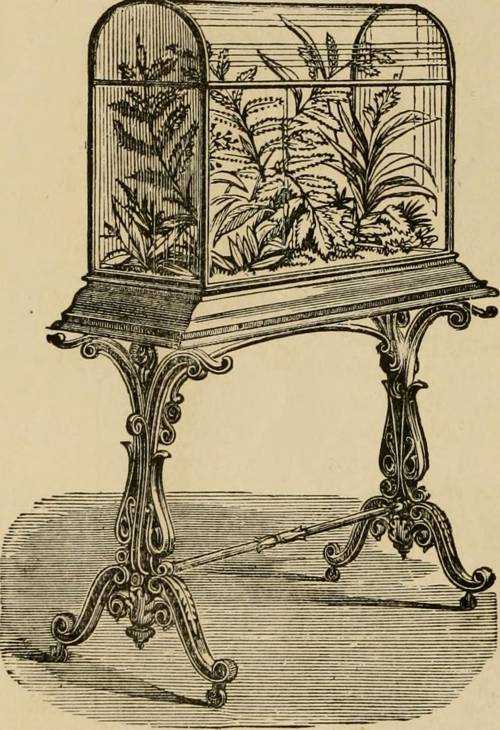
FAQ About Indoor Plant Growth Stimulants

What are indoor plant growth stimulants?
Indoor plant growth stimulants are substances used to enhance the growth, development, and overall health of plants kept indoors. These can be natural or chemical formulations designed to provide essential nutrients, hormones, or conditions conducive to plant growth. They help in optimizing factors like light exposure, nutrient uptake, and water retention, promoting vigorous growth and vitality.

How do natural stimulants differ from chemical ones?
Natural stimulants are derived from organic sources such as compost, seaweed extract, or animal-based fertilizers, while chemical stimulants are synthetic formulations specifically designed to provide targeted nutrients or hormones. Natural stimulants are often preferred for their eco-friendly properties, whereas chemical stimulants may offer faster results and precise nutrient compositions. Each type has its unique application techniques and benefits.

Are growth stimulants safe for all types of indoor plants?
Most growth stimulants are generally safe for a wide variety of indoor plants, but it is important to choose the right stimulant tailored to the specific needs of your plants. Overapplication can lead to nutrient burn or other adverse effects, especially with chemical stimulants. Always follow the manufacturer's instructions regarding dosage and application methods for optimal safety and effectiveness.

Can I make homemade plant growth stimulants?
Yes, you can create homemade plant growth stimulants using ingredients like banana peels, eggshells, coffee grounds, and compost. These can be used to make teas or mixes that can enrich the soil. Homemade stimulants can be a cost-effective and natural way to boost plant health and growth, although their nutrient profile might not be as concentrated or predictable as commercial products.

What are some examples of chemical growth stimulants for indoor plants?
Common chemical growth stimulants include N-P-K fertilizers (Nitrogen-Phosphorus-Potassium blends), rooting hormones like auxins, and liquid plant foods that might contain micronutrients like iron, calcium, and magnesium. These products are formulated to boost specific aspects of growth, such as root development, foliage density, or flowering potential.

How often should I apply growth stimulants to my indoor plants?
The frequency of application depends on the type of stimulant and the specific needs of the plant. Generally, natural stimulants can be applied more regularly whereas chemical stimulants might need more careful scheduling, often on a weekly or monthly basis during the growing season. As each plant has its unique requirements, it's crucial to monitor plant health and adjust application as needed.

What are the benefits of using growth stimulants on indoor plants?
Using growth stimulants can lead to improved plant health, faster growth rates, increased resilience against pests and diseases, and enhanced flowering and fruiting. They help in optimizing nutrient uptake and can result in more vibrant foliage and stronger root systems, contributing to the overall aesthetics and vitality of indoor plant settings.

Can growth stimulants help revive a dying indoor plant?
Growth stimulants can aid in reviving a dying plant by providing essential nutrients and enhancing root strength and foliage health. However, it's important to first diagnose the underlying issue affecting the plant, such as improper watering, insufficient light, or disease, before applying stimulants. A balanced combination of care factors along with stimulants might offer the best chance of revival.

Are there any risks associated with using chemical growth stimulants?
Using chemical growth stimulants improperly can result in nutrient burn, which can damage plant roots, foliage, and overall health. There's also the risk of runoff contributing to environmental pollution. It's essential to carefully follow dosage instructions and application guidelines to minimize these risks. Opting for balanced formulations and regular monitoring of plant response is recommended.

What are some signs that indoor plants need growth stimulants?
Indicators that indoor plants might benefit from growth stimulants include sluggish growth, discolored or wilting leaves, weak stems, and poor flowering or fruiting performance. Additionally, if plants are not responding to regular care or show signs of nutrient deficiencies such as leaf chlorosis, growth stimulants might help address these issues.

Do growth stimulants affect the flavor of edible indoor plants?
Natural stimulants tend to have minimal impact on the flavor of edible plants, while chemical fertilizers might alter taste if overused, particularly nitrogen-heavy ones. Using stimulants according to package guidelines, especially for edible plants, helps ensure that the natural flavor is preserved while still benefiting from improved growth.

How can I avoid overusing growth stimulants on indoor plants?
Avoid overuse by strictly adhering to dosage instructions on product labels and closely monitoring plant responses. Observe how your plants respond over time and adjust amounts or frequency if you notice adverse effects such as leaf burn or yellowing. Integrating organic alternatives and reducing reliance on chemicals can help maintain a balanced approach to plant care.

What is the best method to apply growth stimulants to indoor plants?
The best method often depends on the type of stimulant used. Liquid stimulants are usually applied through watering, ensuring thorough soil saturation, while granules or powders might be mixed with soil directly or top-dressed. Foliar sprays can target immediate foliage needs. Understanding the specific needs of your plants and stimulant properties is crucial for effective application.

Can growth stimulants help with pest control?
While growth stimulants primarily focus on nutrient enhancement, some organic stimulants like neem oil or garlic-based products possess pest-repelling properties. However, they are not substitutes for specific pest control products but can offer a mild integrated pest management approach by boosting plant vigor, which naturally enhances resistance.

Do indoor plant growth stimulants have any impact on allergies?
Typically, growth stimulants themselves are not known to trigger allergies, but the plants' response, like pollen production, might affect allergy sufferers. Choosing low-allergen plants and monitoring plant reactions while using stimulants can help minimize allergies. It's advised to maintain good ventilation and cleanliness around indoor plant areas.

How do I choose the right stimulant for my indoor plants?
Choosing the right stimulant involves assessing your plant's specific needs, growth stages, and environmental conditions. Researching product components, such as nutrient balance, and consulting with gardening experts can guide you in selecting appropriate stimulants. Factors like plant species, care routines, and desired outcomes should inform your decision.

Can growth stimulants be used with hydroponic indoor plants?
Yes, growth stimulants are compatible with hydroponic systems. They can aid in enhancing nutrient availability in water-based growing environments. Hydroponic-specific formulations ensure plants receive balanced nutrients without soil, supporting optimal root and foliage development. Always consider specialized products designed for hydroponic setups for best results.

Are there stimulants specifically designed for flowering indoor plants?
Yes, there are stimulants formulated to promote flowering in indoor plants, typically rich in phosphorus and potassium. These products encourage flower bud formation and bloom health, boosting the vibrancy and longevity of flowers. Ensuring balanced application along with proper environmental conditions is critical for flowering success.

Can indoor plant growth stimulants help with light deficiencies?
While growth stimulants cannot directly replace light, they can enhance the plant's ability to cope better under suboptimal lighting conditions. They boost the overall health and resilience of plants, which might indirectly help them manage less-than-ideal light exposure. Complementing stimulants with grow lights can effectively address light deficiencies.

Are there eco-friendly options for indoor plant growth stimulants?
Eco-friendly options include organic compost, worm castings, and seaweed or fish emulsion extracts, which provide natural nutrients without synthetic chemicals. These stimulants support sustainable gardening practices by enriching plant soil and promoting healthy growth while remaining environmentally considerate. They are widely favored for their beneficial properties and minimal ecological impact.
